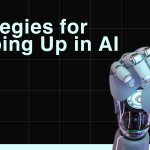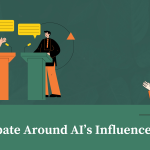Quick Take
Retrieval-Augmented Generation (RAG) isn’t a passing trend but a foundational AI approach. While its initial buzz has faded, its utility in real-world applications ensures its longevity.
RAG emerged as a solution to a critical limitation of large language models (LLMs): their inability to access updated or proprietary data. Initially hyped for applications like FAQ bots and document summarization, RAG’s broader potential has been somewhat overshadowed by newer buzzwords. However, dismissing it as short-lived overlooks its evolving role in AI innovation.
1. The RAG Advantage: Bridging Gaps
At its core, RAG provides LLMs with external knowledge bases, enabling them to deliver contextually accurate responses without hallucinations. This is particularly valuable for:
• Internal Business Tools: Accessing CRM data or policy manuals.
• Sensitive Data Handling: Avoiding cloud-based solutions for privacy concerns.
• Custom Applications: Supporting domain-specific queries, from legal contracts to medical protocols.
2. Evolution into Best Practices
As one commenter noted, RAG and similar concepts may become standard practices rather than standalone innovations. Just as cloud integration is now ubiquitous in software, RAG could underpin many AI systems without being explicitly labeled.
3. Addressing Limitations
Critics highlight the current pitfalls of RAG implementations, such as poor handling of multi-turn interactions or inadequate context awareness. These challenges underscore the need for better tooling and infrastructure. Future iterations will likely integrate RAG more seamlessly with conversational agents and action-oriented AI.
4. Cost-Effective AI Scaling
RAG is also a practical choice for reducing costs, allowing businesses to use static models enriched with dynamic data rather than retraining. This makes it particularly appealing in sectors where agility and cost management are critical.
5. Beyond the Buzz
As the hype dies down, RAG will find its “proper place,” as one commenter aptly put it. Its future lies not in headline-grabbing applications but in quietly powering AI solutions that demand tailored, secure, and context-aware outputs.
Final Thoughts
RAG’s moment as the “next big thing” may have passed, but its significance as a tool for augmenting LLM capabilities remains. Far from being short-lived, RAG is evolving into an indispensable part of AI’s broader ecosystem—one that prioritizes utility over novelty.


